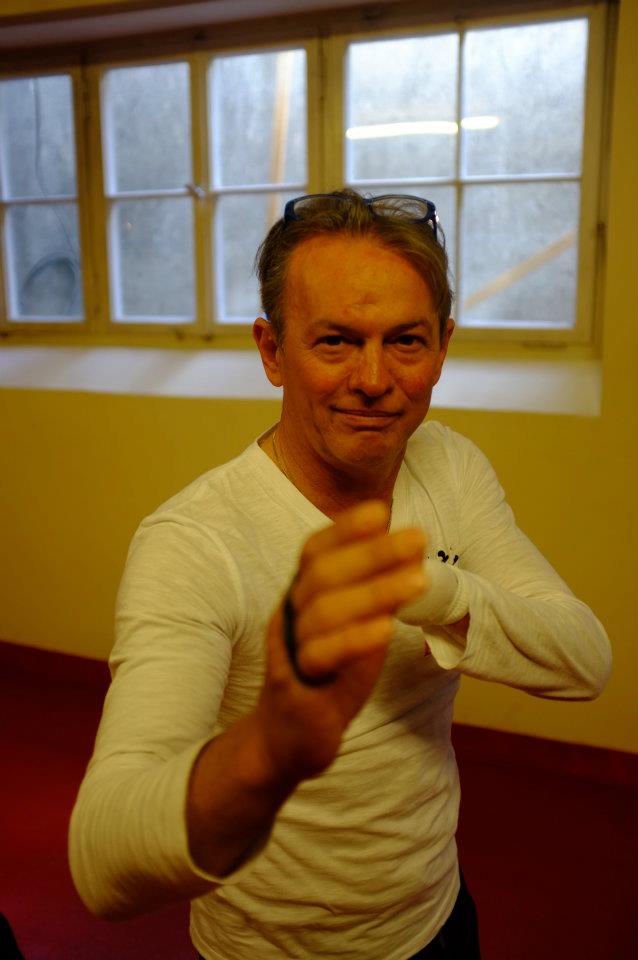I kinda think I do too... but to be honest I'm not sure. It would help if he would explain exactly how and what h
e prefers to do instead!
Not likely though. I fully expect he will get sidetracked into a big argument with KPM and I will never know exactly what he advocates.

LFJ is not very clear or concise on what he means. He equated a center held guard directed at the opponent as being bad. But like you, I kind of think he was actually referring to the "gate theory" as what he believes leads to this "reactive strategy" and "chasing hands" (which I also disagree with). However, in typical fashion, he would rather argue than explain and elaborate.
Several have said they don't use a "center held guard." But you don't have to have the classic Man Sau/Wu Sau position with arms extended to have a "center held guard directed at the opponent". There really are only two options when it comes to guards. You either have your guard occupying the center so that the opponent is more likely to go around and come in at somewhat of an angle, or you have your hands held wide of center so that the opponent is more likely to strike down the middle between them. The best example of the first option is obviously Wing Chun. The best example of the second option is Muay Thai. There are western boxing versions of both, depending on the fighter. For sparring Alan Orr teaches to keep the hands held back closer in, but they are still in front of the face and on the centerline. So unless you are holding your hands wide like a Thai boxer, you are likely using a "center held guard" that is a variation of the classic Wing Chun "Man Sau/Wu Sau" position.
And gate theory does not make you reactive and "chase hands." It simply defines quadrants through which an attack is likely to come. Heck, you don't have to block at all if you don't want to! But if you can identify that an attack is coming thru a particular quadrant you can angle or move away from it and chain punch to your heart's content!

By having your hands occupying the center, the opponent is more likely to be punching around at an angle. And since the shortest distance between two points is a straight line, you have a chance of hitting him before he can hit you simply because you will be punching straighter than him. If you are holding your hands away from the centerline, that means you will have to either punch at an angle rather than straight, or bring your hands back to centerline as you punch. Either way this is not as direct as having your hands on the centerline when you start the punch. This is Wing Chun 101.
Additionally, by using the gate theory you train and recognize the optimal hand techniques to defend a particular gate or quadrant. So in instances where you don't have the angle, distance or timing to simply move in and punch, you know which hand technique to use without thinking about it. And that hand technique may simple by insurance to make sure you don't get hit by him AS you are moving in and punching. Duncan Leung teaches to cover, not to think about blocking. Gate theory + center held guard gives you the structure to cover while hitting quickly and effectively. Nothing is "chasing hands" about it, unless understood or used improperly.
So all you guys that say you do Wing Chun without a "center held guard directed at the opponent" I would love hear what you are actually doing!
I'll point out that on that video that Sean shared, not only are the students using a center held guard directed at the opponent, but at times they are being "reactive"! At several points the partner threw a wide loopy punch and the student used a high cover rather than just stepping in and punching.






